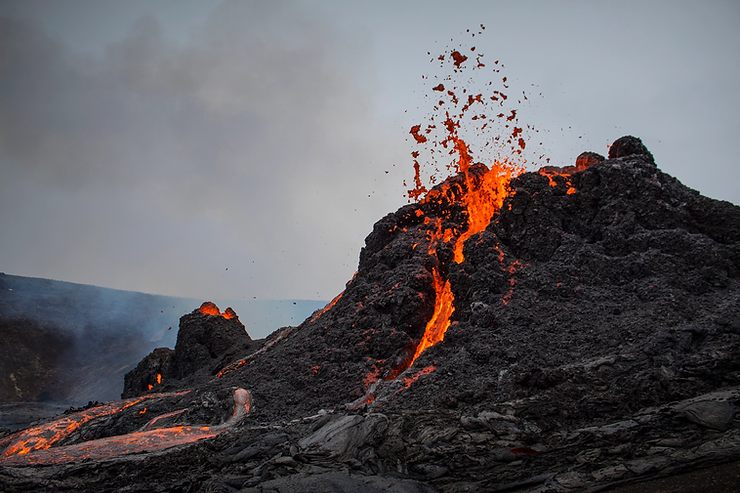By: Andrew Xiao
When the Fagradalsfjall Volcano in Iceland erupted in 2021 after 781 years of dormancy, tourists naturally took videos and photos of the eruption, which lasted for six months.
But only seeing the surfaced lava from the documentation wasn’t enough for many scientists, who sought to discover the events beneath the Earth’s crust. As such, helicopters took samples of the lava on the first day and discovered something surprising: the lava contained a surplus of crystals.
Recently, with many similar samples of the lava collected during six months, researchers have worked to describe the dynamics of the underground magma that led to the Fagradalsfjall eruption. In a paper in the journal Nature Communications, researchers studied chemical compositions of the lava and found that it contained a wide range of material from varied parts of the mantle, the layer between the Earth’s crust and core. This variance was unexpected and further illustrates the causes of a volcanic eruption.
Frances Deegan, a volcanologist at Uppsala University in Sweden and a co-author of the paper, noted, “We have a really detailed record of the different types of composition that we can find in the mantle now, and it must be very heterogeneous, very variable.”
When researchers also found that the Fagradalsfjall lava was primitive, meaning that the lava came from a magma reserve and not a shallow reservoir in the Earth’s crust, many hurried to get samples of the lava, like Ed Marshall, a geochemist at the University of Iceland. “We were working all hours — you’re asleep and the volcano’s still erupting and you’re like, ‘I got to get back out there,’” said Dr. Marshall. “But it’s hard to describe how rare this kind of thing is.”
The Fagradalsfjall volcano exists between the Eurasian and North American tectonic plates, at a specific point where they both pull apart and rub each other. Geological evidence suggests that an eruption happens around every 1,000 years, and more than a year of earthquakes preceded this most recent eruption. Olafur Flovenz, director of the Iceland GeoSurvey, and others published a paper that asserts that this activity was caused not by magma pooling near the surface, but instead by carbon dioxide from magma between the crust and mantle, in the Mohorovicic discontinuity, or moho.
Volcanoes usually happen because of different smaller magma flows that combine together. “This mixing process is an essential geologic process, but it’s never been directly observed,” said Dr. Marshall. Since this mixing occurs so deep underground, chemical signatures of individual flows become harder to distinguish. However, the molten rock and crystals shot up from the recent eruption comes directly from the moho, something that could unravel some of the mixing and melting processes in the mantle.
“These are very exciting times,” said Dr. Flovenz, who started studying Icelandic volcanoes in 1973. “I had never had the hope that I would live to see this unrest and eruptions on this peninsula. This has been extremely interesting for the geosciences community.”
“It’s an absolutely amazing eruption for our field,” said Dr. Marshall, “and it’s one of those things that will be studied for a long time.”
Link to article: In Iceland, a Volcanic Eruption Brings Researchers Closer to Earth’s Core – The New York Times











